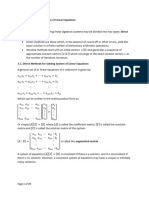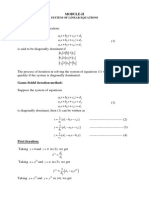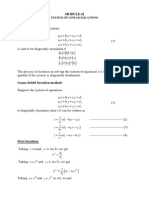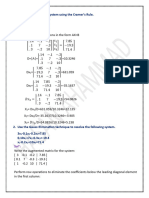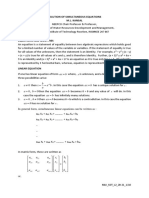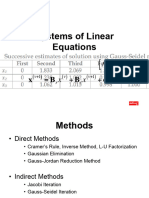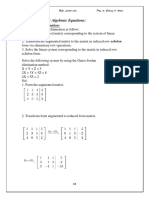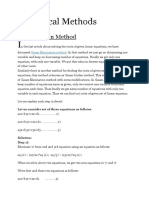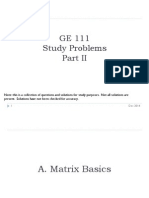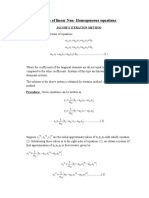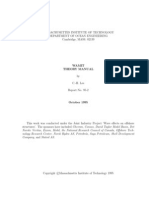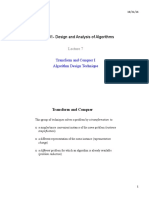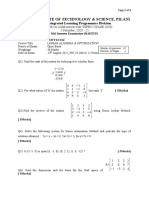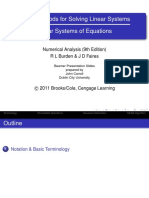0% found this document useful (0 votes)
166 views13 pagesSolution of System of Linear Equations
The document summarizes various methods to solve systems of linear equations:
1) Direct methods include Gauss elimination, Gauss Jordan, and factorization methods which directly compute the solution.
2) Indirect or iterative methods like Gauss-Jacobi and Gauss-Seidel iteratively approximate the solution.
3) The Gauss elimination and Gauss Jordan methods use row operations to reduce the matrix to row echelon form.
4) Factorization methods factor the coefficient matrix into LU or L/U matrices to solve the system.
5) Iterative methods like Gauss-Jacobi and Gauss-Seidel successively update the solution estimates.
Uploaded by
Manoj GuptaCopyright
© © All Rights Reserved
We take content rights seriously. If you suspect this is your content, claim it here.
Available Formats
Download as DOCX, PDF, TXT or read online on Scribd
0% found this document useful (0 votes)
166 views13 pagesSolution of System of Linear Equations
The document summarizes various methods to solve systems of linear equations:
1) Direct methods include Gauss elimination, Gauss Jordan, and factorization methods which directly compute the solution.
2) Indirect or iterative methods like Gauss-Jacobi and Gauss-Seidel iteratively approximate the solution.
3) The Gauss elimination and Gauss Jordan methods use row operations to reduce the matrix to row echelon form.
4) Factorization methods factor the coefficient matrix into LU or L/U matrices to solve the system.
5) Iterative methods like Gauss-Jacobi and Gauss-Seidel successively update the solution estimates.
Uploaded by
Manoj GuptaCopyright
© © All Rights Reserved
We take content rights seriously. If you suspect this is your content, claim it here.
Available Formats
Download as DOCX, PDF, TXT or read online on Scribd
/ 13









